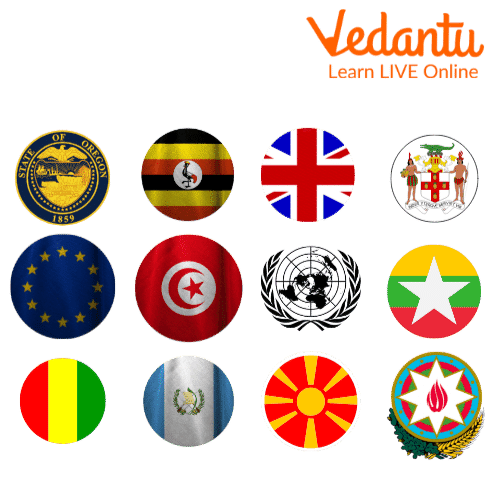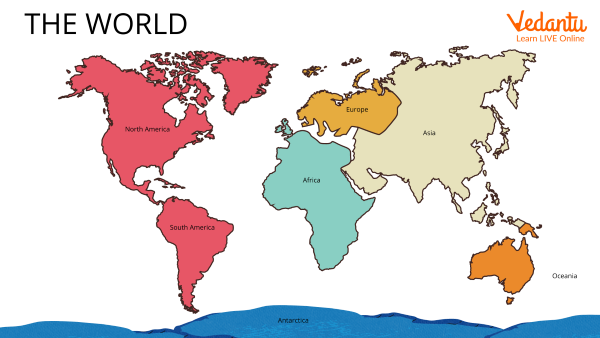




What is a Country?
A state, nation, or other political entity with a distinct territorial body is known as a country. It may be a sovereign state or a component of a larger state, a non-sovereign or formerly sovereign political division, a territory with a functioning government, or a geographical area containing a variety of politically distinct people who have historically been independent or otherwise associated.
Russia is the country with the largest land area, and Vatican City is the smallest. The Pitcairn Islands have the lowest population, and the country China has the highest population.
Country Symbols
The cultural, religious, or political representation of any nation or race that makes up a country is indicated by its symbols. Flags, coats of arms, and seals all use a variety of symbol categories.
Flags
Coats of arms or national emblems
Seals or stamps
National mottos
National colours
National anthems

National Symbols of Different Countries
Country Classification
Many organisations look at trends to create country categories. Countries can sometimes be divided into
Developed countries
Developing countries
Today, there are 195 nations in the world. This number includes the Holy See and the State of Palestine, two non-member observer nations, together with the 193 United Nations member states.
The following nations are excluded from the total of 195 countries:
The People's Republic of China is considered to be Taiwan's representative by the United Nations.
The Cook Islands and Niue, both states in free association with New Zealand, are neither member states nor non-member observer states, although they are both recognized as having "full treaty-making ability" and are members of a number of UN specialised bodies.
Areas of Special Sovereignty and Dependencies (also Dependent Territories, Dependent Areas, Dependencies) (autonomous territories).
Other nations that the UN has acknowledged as not having independent governments.
How the World is Divided of the 195 Countries in the World
54 countries are in Africa
48 in Asia
44 in Europe
33 in Latin America and the Caribbean
14 in Oceania
2 in Northern America

The World
Country Names
According to the alphabetical order, a list of country names is mentioned below.
Summary
In general, a country is one that has a permanent population, a clearly defined territory, a functioning government, and the ability to engage in diplomatic contacts with other governments. Global economic policies are constantly shaped by the most powerful nations, who rule the world through these characteristics: political stability, economic influence, defence spending, national arsenals, international alliances, etc. In this given article, an introduction about the meaning of a country is mentioned. General knowledge regarding the country and the symbols is briefly given. The list of names of the countries that are present on the globe is also listed in the same.
FAQs on Name of the Countries
1. Define the term country.
A country is a territory-contained area or region with a distinct political structure. A nation may be a separate sovereign state, a component of a bigger state, a non-sovereign political subdivision, a former sovereign political division, or a geographical area containing a variety of politically distinct groups of individuals.
2. Name the countries which are largest in terms of population and land area.
Russia is the largest nation in the world, with a total area of 17098242 km2 and a land area of 16376870 km2, or 11% of the 148940000 km2 total landmass of the planet. Although India 1.417 billion is predicted to surpass China 1.426 billion as the country with the biggest population next year. Together, the populations of the next five most populous countries — the United States, Indonesia, Pakistan, Nigeria, and Brazil—are lower than those of either China or India.
3. What is the number of countries present in the world?
Today, there are 195 nations in the world. This number includes the Holy See and the State of Palestine, two non-member observer nations, together with the 193 United Nations member states.









